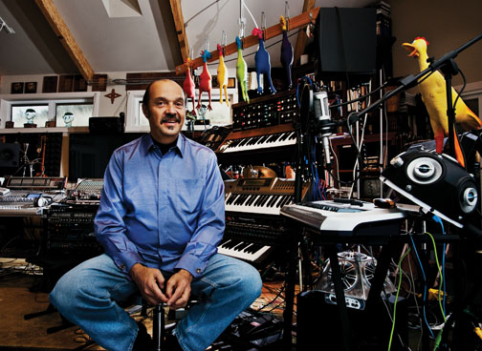Genesis of the film
Adam Nemett began writing THE INSTRUMENT while spending the summer of 2000 backpacking through the mountains of Shikoku, Japan. Nemett, an award-winning graduate of Princeton University’s Creative Writing department, initially intended THE INSTRUMENT to take the form of a novel. When the heavy emphasis on music and dance made the story more conducive to the multi-sensory medium of film, Nemett began adapting a screenplay in the Summer of 2001, and completed it during a Fiction Workshop taught by author Joyce Carol Oates in Spring 2002.
Rather than invent wholly fictional characters from scratch and then find actors and actresses to assume these roles, Nemett attempted to base the seven student characters on the actual people who might play these parts. The plan was to do several takes of each scene as scripted. But many of the scenes would also be improvised, with the likelihood that these scripted and improvised versions would be edited together to achieve a certain naturalness and spontaneity.
While formulating his core group of actors and writing a flexible script around their personalities, there was also the matter of constructing the primary sets for THE INSTRUMENT: namely, the 30’ X 30’ sanctuary and ritual elements created by fictional character, Arthur Zarek.
In order to do this, Adam and his father, Barry Nemett, organized a semester-long course at the Maryland Institute College of Art (MICA), one of the top fine arts schools in the country. Together, they hand-picked a group of 25 visual artists from various disciplines to collaborate on the production design of the film, all under the auspices of a credit course called “Art & The Instrument”.
To foster the collaborative spirit of the project, and to better explain the different facets of the project, several Princeton-based members of the cast and crew traveled to Baltimore throughout the semester to lead the classes. Essentially, the construction of the space depended on two main aspects: fleshing out the fictional character that created the space, and further developing his seven ritual ceremonies.
Creating a creator
The character of Arthur Zarek, our semi-fictional visionary, was essentially a conglomeration of five real-life personalities:
Harry Partch — a musician and legendary composer, famous for developing a system of musical theory based on 43 tones per octave (instead of the standard Western theory based on 12 tones per octave). He called this system "Just Intonation" and built an arsenal of musical instruments — each of them sculptural in nature and requiring a certain amount of dance-like movement in order to play — all capable of actualizing his system of Just Intonation. Partch proceeded to compose works based on a sort of ritual musical theater, which he called “corporeal music,” and staged numerous performances incorporating elements such as Noh drama, opera, and filmmaking.
James Hampton — a Washington D.C. custodian and "visionary" artist, legendary for the post-humous discovery of his life’s work, an installation known as “The Throne of the Third Heaven of the Nations' Millennium, General Assembly.” The installation, constructed over a 14-year period in an anonymous garage space, includes 177 objects -- furniture, altarpieces, and shrines — each meticulously wrapped in aluminum and gold foil. It is assumed that Hampton was creating a sacred church space that would eventually be used as a functional sanctuary, with himself serving as minister. The work of folk art is considered by some to be “the finest work of visionary religious art produced by an American," and now sits in the permanent collection of the Smithsonian Institute in Washington D.C.
Harry Partch
James Hampton
Perry Cook
Rabbi David A. Cooper
Richard Kalter
Perry Cook — Princeton associate professor of Computer Science and Music, Cook has created over a dozen digital musical instruments, including an electronic didgeridoo and even a digital musical coffee mug. Cook’s desire is to create an “augmented reality” by using a computer to model a real-life sound, and then creating any number of “controllers” to manipulate these sounds. In other words, by hooking up a digital sensor to any physical object, a human can use a computer to change the nature of the sound produced by that object. Ajay Kapur, who played “Nirav” and served as Director of Music for the film, worked with Cook during his senior year at Princeton to create an electronic tabla (later used as one of the instruments supposedly created by Arthur Zarek).
Rabbi David A. Cooper - A master of Jewish Mysticism and meditation, Cooper was also a student of Sufism, Zen Buddhism and Tibetan Buddhism, and wove these different contemplative traditions and practices together to heavily influence the Jewish Renewal Movement. He has written seven books, including national best seller God Is a Verb. With thousands of students around the world, Cooper and his wife Shoshana have led countless silent meditation retreats, and his teachings and chantings heavily influenced the spiritual system of sound and silence appearing in The Instrument. David Cooper passed in July 2020, and his mentorship, friendship and "tikkun" will have a lasting impact.
Rev. Richard Kalter — An Episcopal priest serving as Philosopher-in-Residence at Maryland Institute College of Art since 1979, Richard Kalter was the natural choice to assume the role of Arthur Zarek. Kalter was largely regarded as the spiritual center of MICA, and touched countless lives over the course of his twenty-five year tenure at the Baltimore institution. Sadly, Richard Kalter passed in November 2004. He will be remembered as a sage, a counselor, and as a friend.






